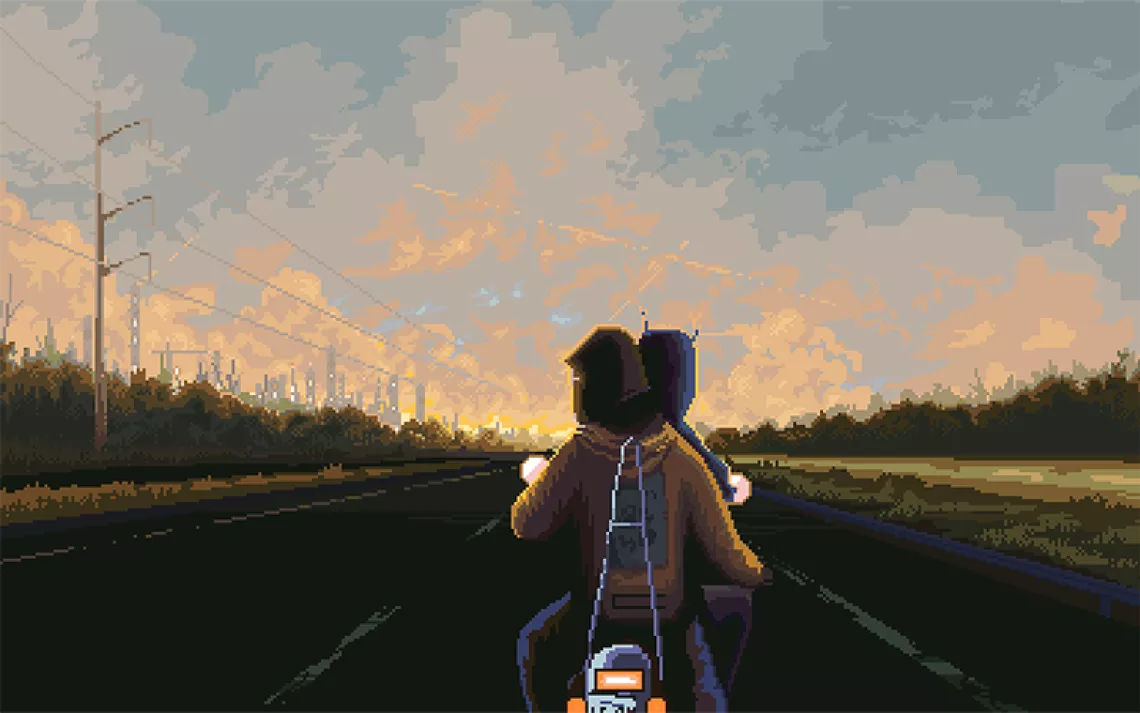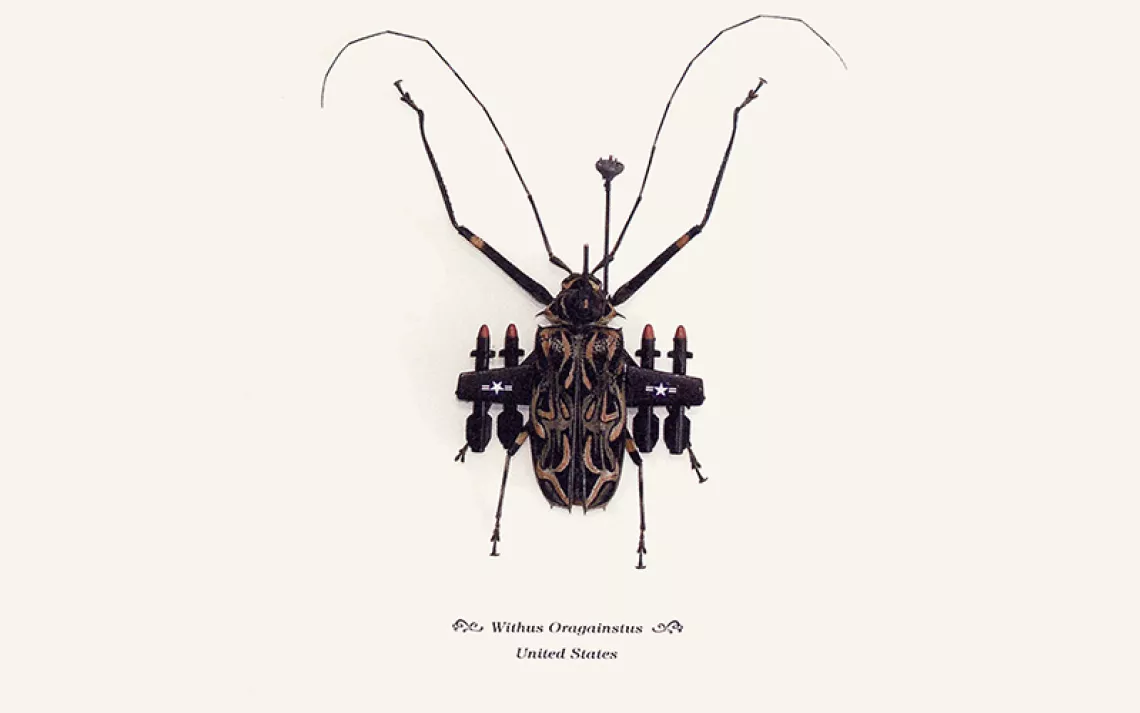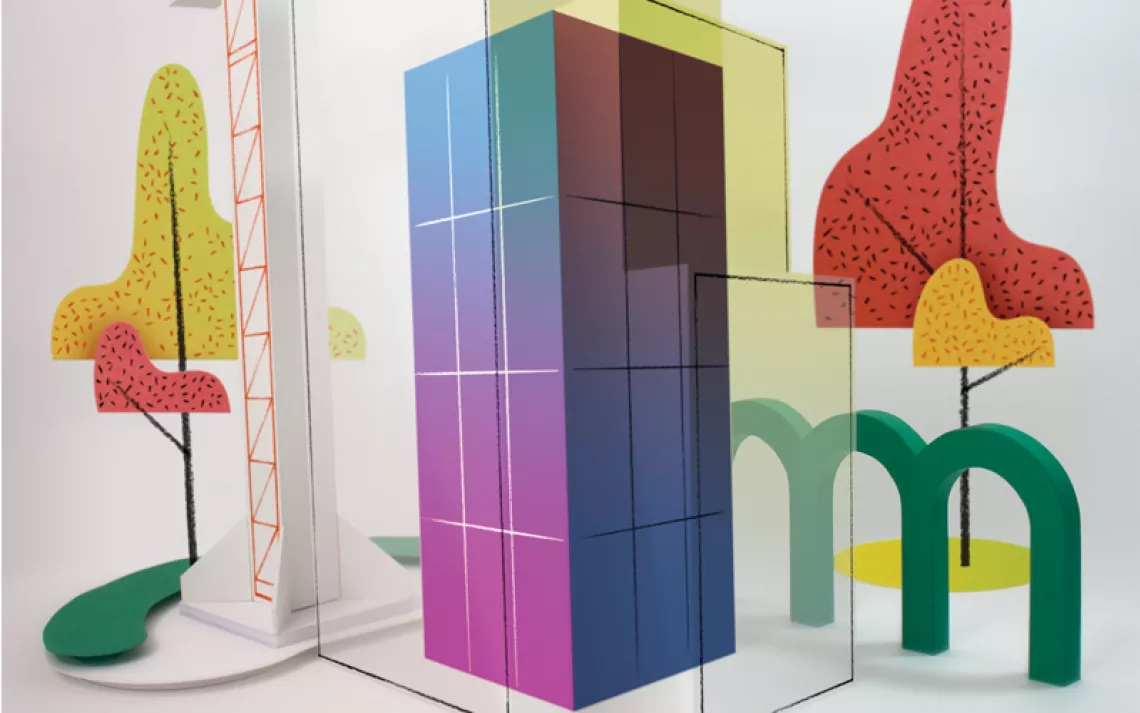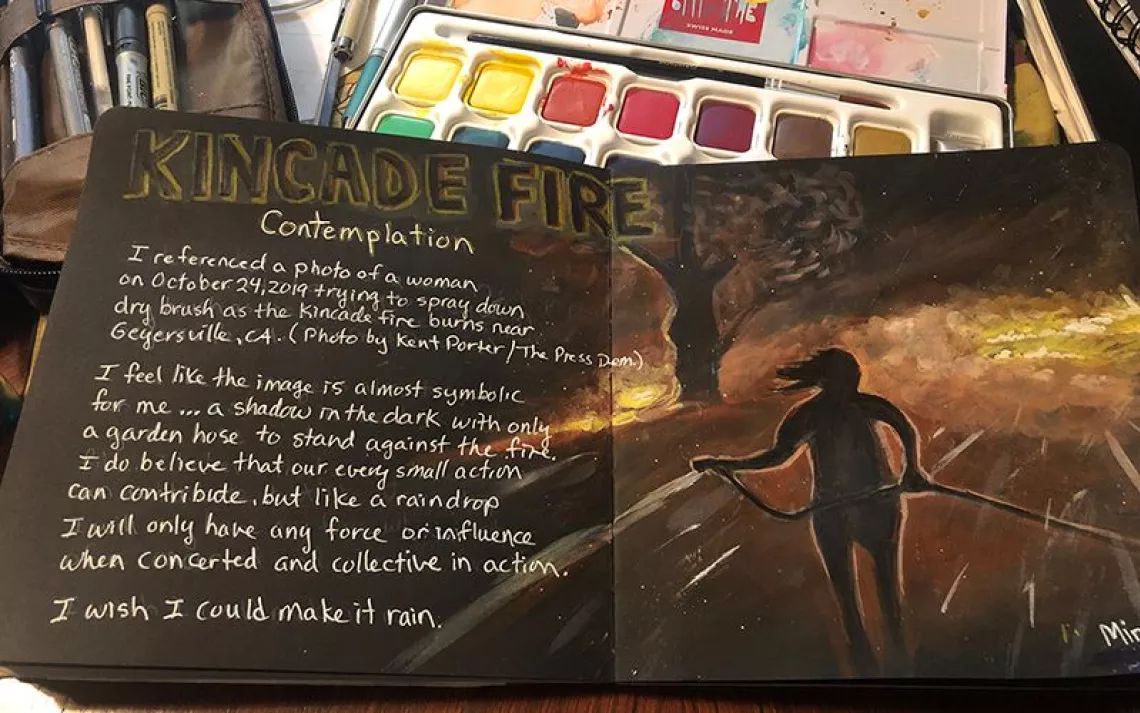Jane Kim's Migrating Murals
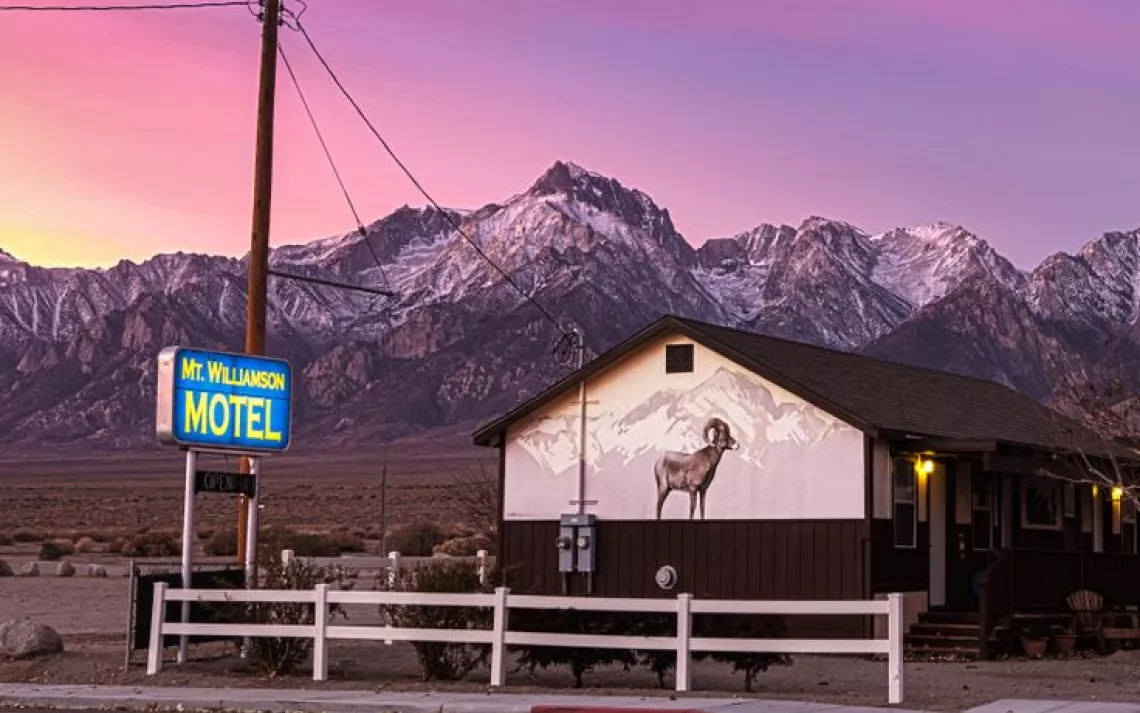
Photo by Cody Tuttle Media
Mt. Williamson Motel in Independence, California, might be the only place in the world where you’re guaranteed a glimpse of the Sierra Nevada bighorn sheep, one of the country's most majestic—and elusive—creatures. Although conservation efforts have helped boost the numbers of the endangered species, only about 500 of them exist today.
A mural of an adult bighorn standing amid the rugged Sierra Nevada bedecks one side of the motel. On the other, a second mural illustrates the sheep's growth stages, from prancing lamb to regal ram, crowned with iconic spiraled horns.
"Not everyone can physically see them, but they can see life-size paintings of them," San Francisco-based artist Jane Kim said of the sheep, which she grew "obsessive" about sighting during a fellowship with the Sierra Nevada Research Institute. The field biologists she shadowed rarely saw the animals, even through their spotting scopes.
Kim finished the Mt. Williamson Motel murals late last year as part of the first installment of her Migrating Murals project to paint endangered wildlife along their migration routes. Mt. Williamson Motel sits at the edge of Highway 395, which roughly follows the bighorn's seasonal trek.
Merging scientific detail with artistic insight, Kim's murals inform as well as enthrall. For her, science and art have always gone hand in hand. After graduating from the Rhode Island School of Design in 2003, she found herself frequenting science museums more than art museums. As she leafed through National Geographic and academic journals, she dreamt about her own illustrations filling their pages.
In 2009, Kim decided to get her science illustration certificate at California State University, Monterey Bay. More than conveying scientific data, she wanted tell stories about science.
"The visceral connection, the draw of people becoming fascinated with a certain topic because they saw a really beautiful piece of artwork that made them shift their perspective on something—I thought it could be such a powerful tool for providing new information to a new demographic," Kim said. Ideally, everyone, even those without a scientific background, would understand her drawings.
Kim's love for wildlife began at an early age. Growing up in suburban Chicago, she felt "a lack of connection" with people but felt a deep kinship with animals. She routinely begged her parents for pets and underwent "phases" of drawing a single type of animal.
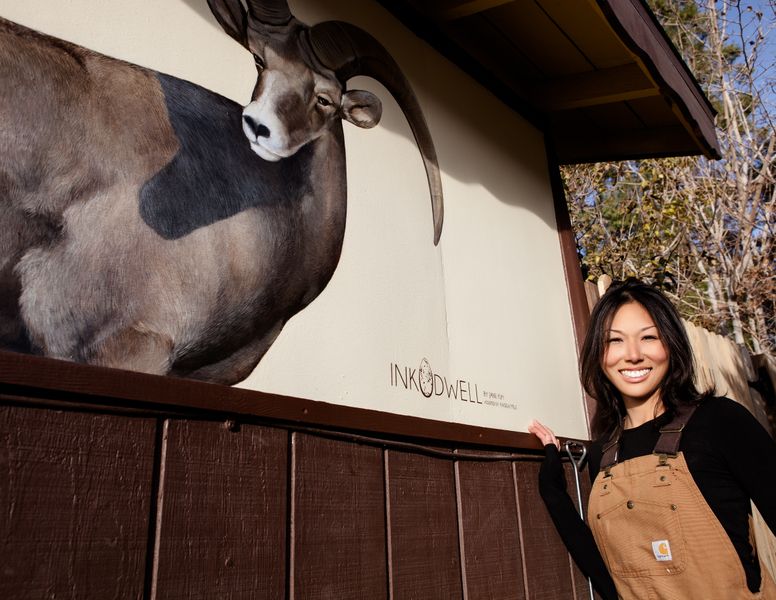 Photo by Cody Tuttle Media "At one point I had my bear phase, and then I had my dog phase, my horse phase," she recalled, laughing. "There was a moment where I was really obsessed with sculpting and painting horses, and then I had a fish phase." During her bear phase, she decided to move to California because of the grizzly on its state flag.
Photo by Cody Tuttle Media "At one point I had my bear phase, and then I had my dog phase, my horse phase," she recalled, laughing. "There was a moment where I was really obsessed with sculpting and painting horses, and then I had a fish phase." During her bear phase, she decided to move to California because of the grizzly on its state flag.
In high school, Kim began filling her portfolio with human anatomical and medical illustrations. But it wasn't long before she returned to her first love—animals. "I actually find more connection with animals than with people," she explained. "There's something just so beautiful about wildlife that you can't find in anything else."
If all goes as planned, Kim will finish the fourth and final Sierra Nevada bighorn sheep mural in October. Future Migrating Murals will showcase the North Pacific blue whale, whooping crane, and coho salmon. Kim hopes that her art will help raise awareness about these species, a crucial first step toward conservation. Ideally, her art will also foster community, with cities potentially creating programming around the murals, such as bike races or field trips. "I'd really love to see these murals create that opportunity and have that lasting connection," she said.
 The Magazine of The Sierra Club
The Magazine of The Sierra Club
